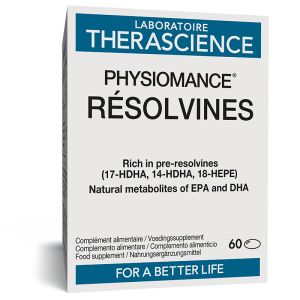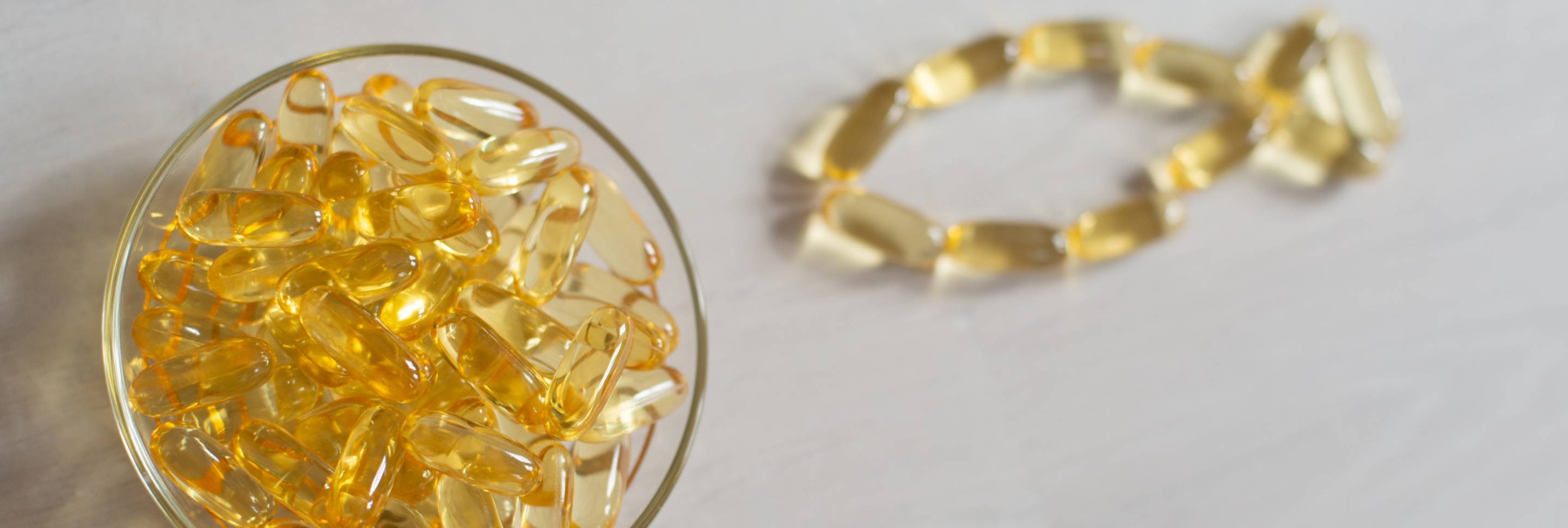
Pre-resolvins: true allies in the fight against inflammation
Inflammation is a natural process that is the first line of defence against attack by pathogens or trauma. However, it is essential that once the benefit of the acute inflammatory response has passed, the cells return to their initial pre-inflammatory state: this is the active process of inflammation resolution, characterised by the return to tissue homeostasis1,2.
If this is not the case, the inflammatory state sets in. This is known as chronic inflammation, which can lead to cell damage often associated with reduced immunity and, in more severe cases, chronic disease. Fortunately, there is a specific family of bioactive lipids that stimulate the resolution phase of inflammation through nutritional supplementation.
The inflammatory response
The initiation phase of the inflammatory response (figure 1) is triggered by stimuli that may originate either from an external source (e.g. mechanical injury, virus,...) or from an internal source in the body. This phase is characterised by the secretion of pro-inflammatory chemical mediators by immune cells3. Strictly speaking, this acute inflammatory response is manifested by 4 distinct events :
- redness,
- heat,
- pain,
- swelling.
The redness and warmth are caused by increased blood flow (vasodilation) following the release of vasodilator molecules, such as histamine. Swelling or oedema is caused by the release of blood plasma from the infected area. Finally, pain occurs as a result of swelling that stimulates pain receptors, as well as the effect of chemical molecules released by immune cells.
The role of the immune cells is to destroy the cause of the inflammation by the release of anti-inflammatory molecules and by phagocytosis (ingestion and digestion of the pathogen). The inflammatory response then concludes with its (rapid) resolution and repair of the damaged tissue.
Figure 1 : The inflammatory response
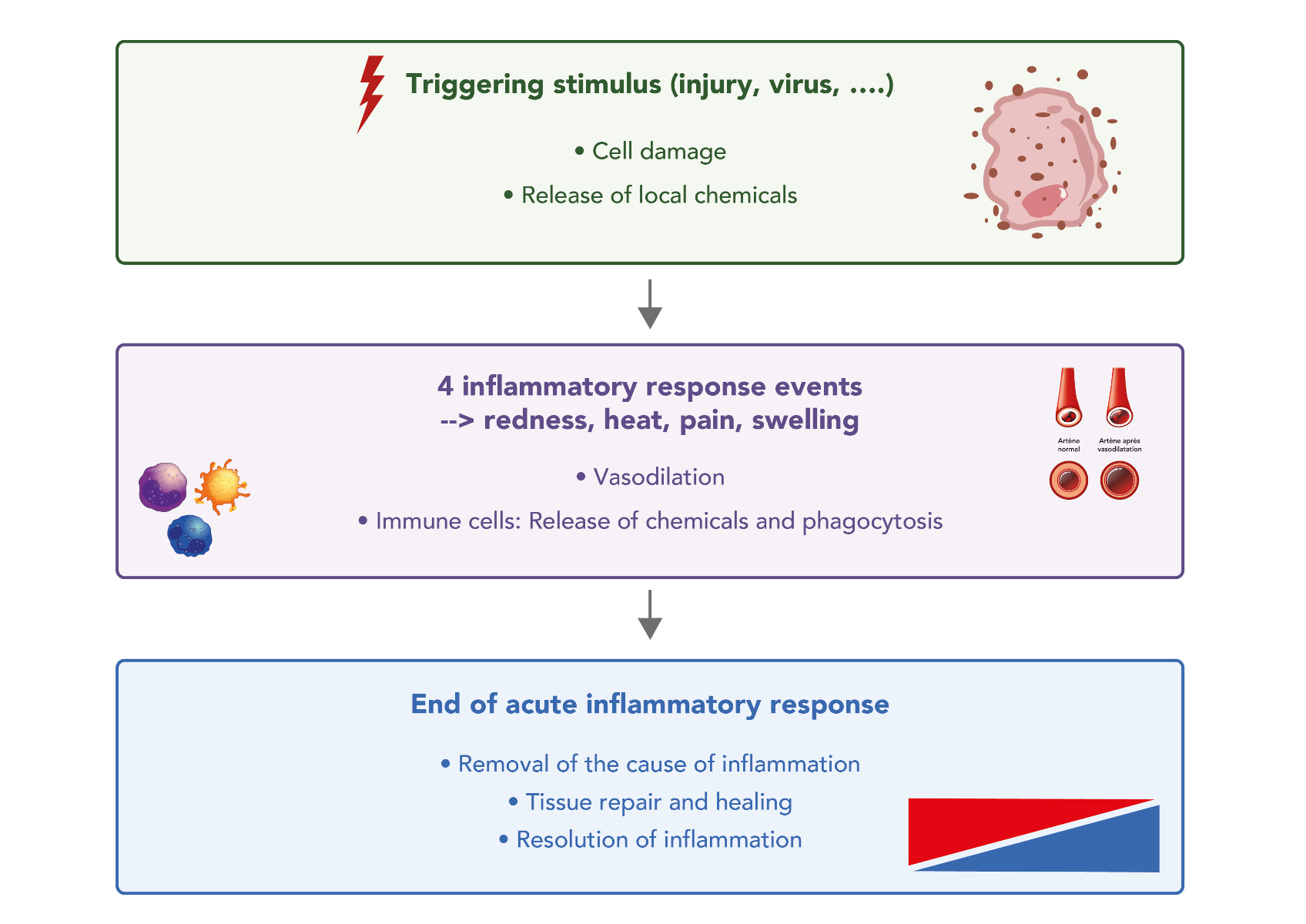
However, immune processes can be accompanied by the release of certain molecules that can further damage the body's cells and prolong the inflammatory pathology. A vicious circle of inflammation, oxidative stress and associated pain can then be created, increasing the risk of a chronic inflammatory state.
Pre-resolvins: true "Valkyries" in the fight against inflammation
The family of SPMs (specialised pro-resolving mediators) consists of lipoxins (LX), resolvins RvE and RvD, protectins PD1 and maresins MaR1, which are derived from long-chain polyunsaturated fatty acids via enzymatic reactions4. These different classes of SPMs are complementary: specifically, resolvins stimulate the resolution of inflammation5. Their intermediate metabolites are the pre-resolvins (17-HDHA and 14-HDHA, 18-HEPE), which are derived from the omega-3 polyunsaturated fatty acids EPA* and DHA** (figure 2).
Figure 2 : The omega-3 fatty acids EPA and DHA and their intermediate metabolites6
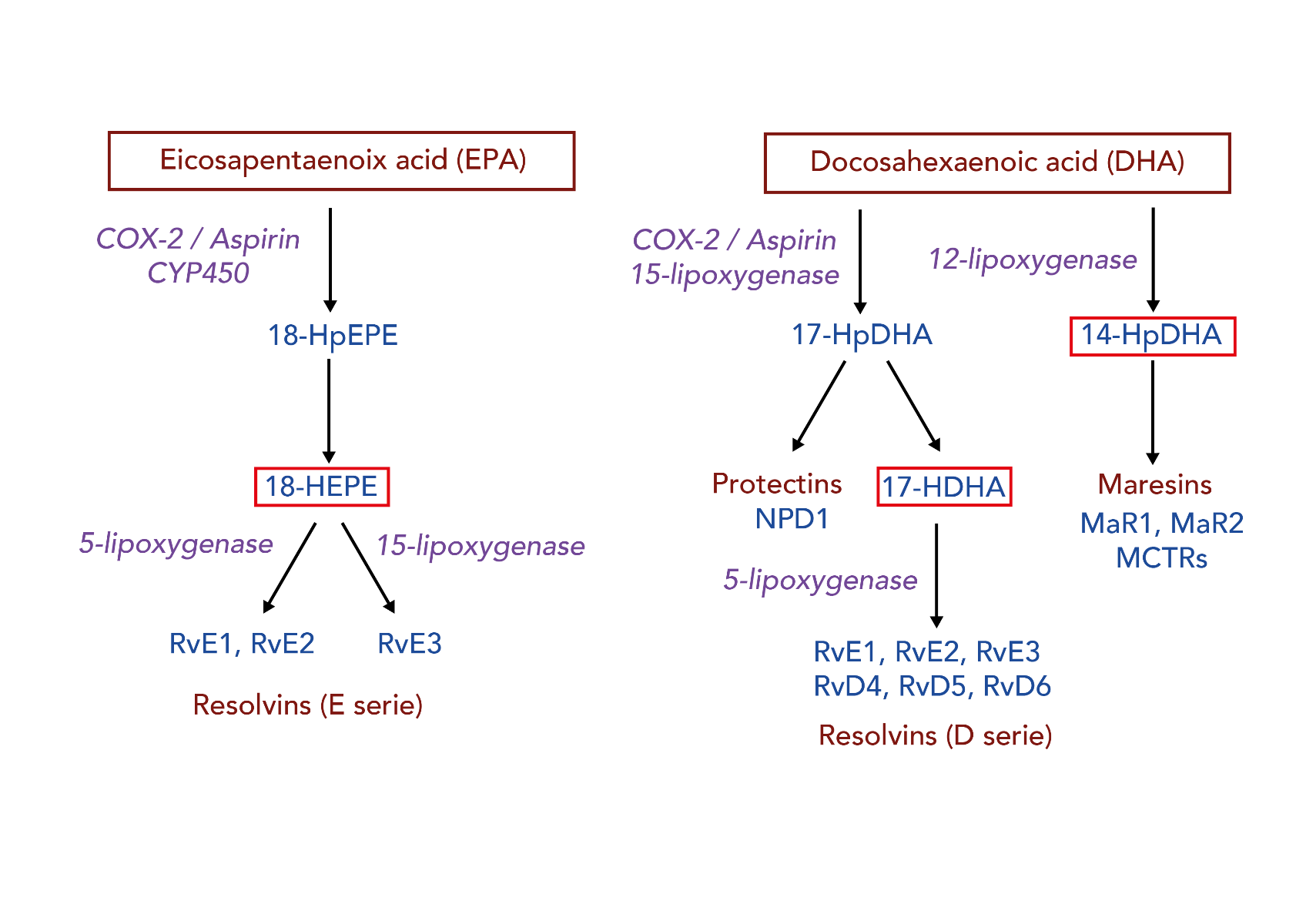
And it is precisely these pre-resolvins that possess resolving and therefore anti-inflammatory properties. Specifically, they act on the recruitment and activity of immune cells, the inhibition and elimination of pro-inflammatory mediators (cytokines and chemokines), the blocking of pain signals, the slowing down of fibrous tissue formation, and the inhibition of free radical formation1,7.
The interest of Physionutrition
This is when supplementation with pro-resolution mediators (SPMs), specifically 18-HEPE, 17-HDHA and 14-HDHA, as well as EPA and DHA, becomes interesting.
Indeed, the supplemental intake of 18-HEPE, 17-HDHA, and 14-HDHA, combined with DHA and EPA, significantly increases the resolvin content in the body and allows for a more effective stimulation of the resolution phase8,9.
Considerable progress in biotechnological innovation now makes it possible to isolate and titrate pre-resolvins, the precursor metabolites of resolvins, from fish sources finely selected for their richness in pre-resolvins10.
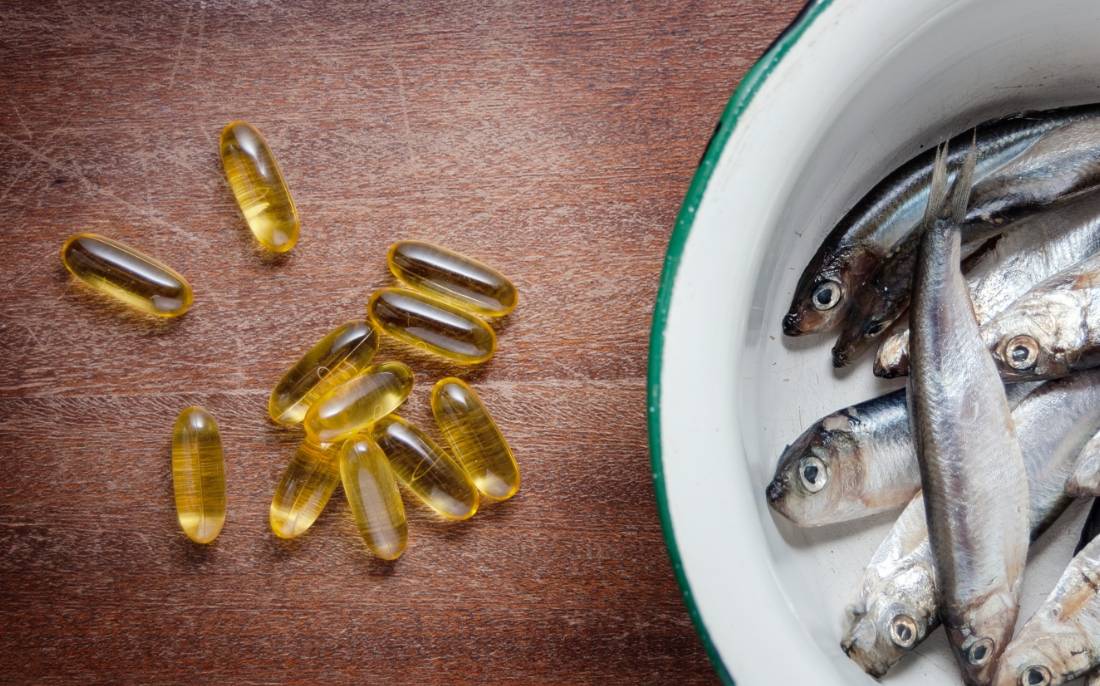
The discovery of these molecules offers the hope of controlling inflammation in a more precise and safer way. For rather than preventing inflammation, it is better to stimulate its resolution. Anti-inflammatory drugs are widely used, but they block our natural defences and cause many side effects. In contrast, resolvins allow the inflammatory response to proceed and then promote the end of the initiation phase, thus allowing a return to the pre-inflammatory state.
What factors affect resolvin levels in the body?
Resolvins are naturally synthesised by the body, but in very small quantities, which makes their measurement and isolation rather complicated. Their synthesis depends on several factors such as genetics, nutrition, lifestyle, etc.
The decrease in resolvins levels in the human body can be due to the inflammation that accompanies ageing, a phenomenon known as "inflammaging"11, but also to stressful situations, toxic environmental factors, dietary imbalances (excess of sugars and omega-6s), and a sedentary lifestyle.
Also, many metabolic diseases lead to impaired conversion of EPA to DHA, and may lead to a decrease in endogenous resolvin production12. These conditions include:
- metabolic syndrome,
- obesity and type II diabetes,
- dyslipidemia,
- cardiovascular disease,
- pulmonary inflammation ,
- chronic joint pathologies (arthrosis, rheumatoid arthritis),
- dysbiosis, etc.
PHYSIOMANCE Résolvines/Resolvyl by Laboratoire THERASCIENCE
Laboratoire THERASCIENCE has formulated PHYSIOMANCE Résolvines/Resolvyl, as nutritional support for low and high grade chronic inflammation, with or without inflammatory outbreaks.
PHYSIOMANCE Résolvines/Resolvyl is highly dosed in pre-resolvines (SPMs) 18-HEPE, 14-HDHA and 17-HDHA (680 µg), as well as in omega-3 EPA and DHA (450 mg). Treat yourself to the best with PHYSIOMANCE Résolvines/Resolvyl and its certified formula FREE of colourings, gluten and lactose based ingredients, not tested on animals and manufactured in Europe, thanks to the Clean Label. PHYSIOMANCE Résolvines/Resolvyl also benefits from the Friends of the Sea© label guaranteeing a superior quality oil.
*EPA : eicosapentaenoic acid
** DHA : docosahexaenoic acid
Bibliography :
- CN Serhan The resolution code of acute inflammation : novel pro-resolving lipid mediators in resolution. Semin Immunol 2015,27(3)200-15.
- SE Headland et al. The resolution of inflammation: principles and challenges. Semin Immunology, 2015, 27,3,149-160
- L Ciaccia et al. Fundamentals of inflammation. Yale J Biol Med. 2011;84(1):64-65.
- Basil MC, Levy BD. Specialized pro-resolving mediators: endogenous regulators of infection and inflammation. Nat Rev Immunol. 2016;16(1):51-67
- CN Serhan. Proresolving lipid mediators are leads for resolution physiology. Nature, 2014, 510,92-101
- SC Dyall et al. Polyunsaturated fatty acids and fatty acid-derived lipid mediators: Recent advances in the understanding of their biosynthesis, structures, and functions Prog Lipid Res 2022, Apr 86 :101165
- R Menon R, et al. Pro-resolution potency of resolvins D1, D2 and E1 on neutrophil migration and in dermal wound healing. Nano Life. 2017 Mar;7(1): 1750002..
- LV Norling et al. Resolving inflammation by using Nutrition Therapy: Roles for Specialized Proresolving Mediators. Curr Opin Clin Nutr Metab Care. 2017:20(2) :145-152
- M Valente et al. SPMs in overview of studies and perspectives of clinical applications. Molecules 2022, 27(15):4836
- Kutzner L, Rund KM, Ostermann AI, Hartung NM, Galano JM, Balas L, Durand T, Balzer MS, David S, Schebb NH. Development of an Optimized LC-MS Method for the Detection of Specialized Pro-Resolving Mediators in Biological Samples. Front Pharmacol. 2019 Mar 7;10:169
- Sendama W. The effect of ageing on the resolution of inflammation. Ageing Res Rev. 2020;57:101000
- M Spite et al. Resolvins, specialized proresolving lipid mediators, and their potential roles in metabolic diseases. Cell Metabolism. 2014;19:21-36.











